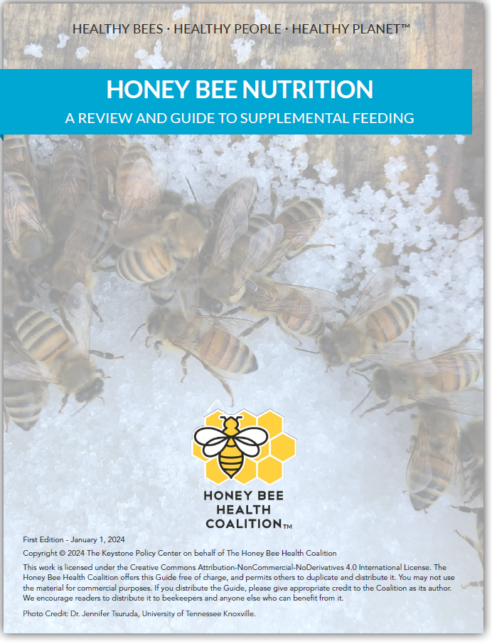Honey Bee Nutrition Guide

Beekeepers now have a valuable resource at their fingertips with the release of the latest comprehensive Honey Bee Nutrition Guide from the Honey Bee Health Coalition. The guide is a review and manual for supplemental feeding in bee hives, giving beekeepers a simple approach to the complex and nuanced world of honey bee nutrition.
Honey bee nutrition varies not only seasonally but also based on the colony’s unique needs and beekeeping practices. From the nutritional demands of larvae to those of the foragers, each stage requires specific attention. This guide serves as a roadmap for beekeepers to meet these diverse needs.
Foragers, the scouts of the bee world, play a crucial role in sourcing floral resources such as pollen and nectar. In the absence of these natural resources, supplemental feeding becomes essential. The Honey Bee Nutrition guide delves into the various considerations beekeepers must account for when deciding on supplemental feeding strategies, including the colony’s brood status, seasonal nutritional needs, and food reserves in the hives.
The guide also reviews the history of supplementing colonies with diets other than pollen, which dates back centuries. It traces this history, highlighting pivotal moments such as Amos Ives Root’s tests with various supplements in 1875 and the foundational research by Mykola H. Haydak and Elton W. Herbert Jr. in the United States. The guide also emphasizes the importance of understanding the limitations of artificial supplements compared to the nutritional richness of natural pollen.
The Honey Bee Nutrition guide also includes a series of interviews with six commercial beekeepers who summarize what works for them when providing supplemental feeding to their honey bee colonies throughout the year, depending on their location and their beekeeping practices.
You can download the guide here or by clicking the image above.